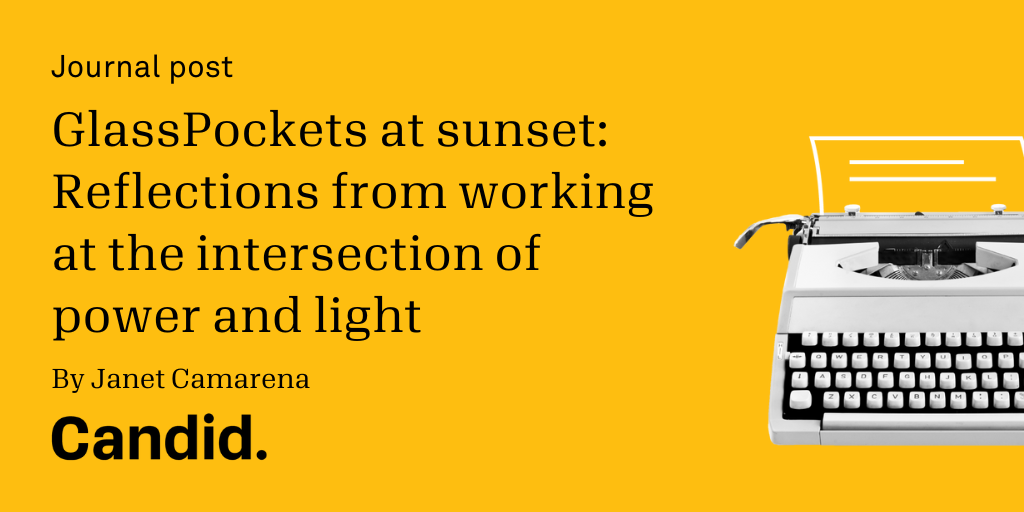Are Chinese Foundations More Transparent than American Foundations?
(Bradford K. Smith is the president of the Foundation Center.)
On August 29, the China Foundation Center launched its online Foundation Transparency Index a "proactive solution to set a new standard for the ethical conduct of foundations in China." Many people are surprised to learn there are foundations in China, let alone that they might be held to higher standards of transparency than their American counterparts. Could that really be the case?
First of all, there are foundations in China -- more than twenty-seven hundred of them, according to the China Foundation Center. Launched in 2010, the CFC was created as a public information service at a time when China's economic growth increasing wealth concentration and strained social safety net were catalyzing a surge in the number of new foundations. The vision of its founders is not unlike the vision of John Gardner and others who, in 1956, created the (U.S.) Foundation Center to provide greater transparency to a rapidly expanding foundation sector in this country. In 1956, that meant stuffing the paper records of seven thousand foundations into filing cabinets. Today it means online databases, data visualization, video, social media, and digitized research reports covering some ninety thousand U.S. grantmakers and millions of their grants, research reports, news stories, and tweets. In contrast, the China Foundation Center was born digital and in just two short years has created online databases, interactive graphics, and research reports that take into account every grantmaker in China.
Second, the CFC's Foundation Transparency Index is an elaborate one, carefully crafted with technical assistance from an advisory group of experts from some of China's leading universities with backgrounds in public policy, "anti-corruption studies," law, and nonprofit studies. The index comprises a checklist of sixty transparency indicators grouped into four categories: basic information, financial information, projects information, and donor information. An elaborate algorithm produces a weighted composite score, with a maximum score of 129.4. Foundations' positions change in the rankings as their scores are adjusted weekly depending on the information they publicly disclose. Just to be sure you don't miss the dynamic nature of the rankings, the tables for each foundation show their previous rankings, whether they are moving up or down, and their twelve-week range. For the 1,831 foundations currently included in the index, only two (this week) get a perfect score of 129.4, while the average for all foundations (this week) is 52.98.
Third, foundations in China are regulated by the Chinese government, making the index a kind of complementary mechanism designed to further enhance voluntary transparency among Chinese foundations. If a foundation chooses not to publicly disclose the information via its own Web site, it will end up with a lower ranking. That is where a crucial difference between the Chinese and American contexts comes into play. In China, the term "foundation" is applied to both "public foundations," which are more like what we would call public charities, and "private foundations," which are akin to private operating foundations in the U.S. The former have every motivation to earn a high score in the Foundation Transparency Index because they solicit and depend on contributions from the public to carry out their work. The latter, though not technically endowed, are established with "registration capital" provided by an individual donor or corporation. Both, however, are concerned about the negative impact of scandal on the sector and know they can benefit from a positive image and general societal appreciation of their role. Thus, the CFC' s Foundation Transparency Index is part Charity Navigator and part "Who Has Glasspockets?" -- a cross between a rating system and a transparency framework.
Fourth, American foundations, like their Chinese counterparts, are required to comply with government disclosure requirements by filing Form 990 or 990-PF. That information is made publicly available by the Internal Revenue Service in the form of unwieldy image files. Organizations like the Foundation Center take millions of those forms and make them searchable in their entirety or, cleaned and coded, in tools like Foundation Directory Online. The cleaning and coding compensates for the missing, inconsistent, and limited information often found on those forms, but no one has ever had the temerity to actually score and rate American foundations on the information provided in the forms. Conventional wisdom has always assumed that, as endowed institutions, American foundations would be relatively impervious to any pressure a rating system might generate and, perhaps more importantly, unlikely to provide grants to whoever created and maintained such a system.
So getting back to the question that inspired this post, the answer is "maybe." The CFC's Transparency Index is geared more toward measuring to what degree Chinese foundations are disclosing compliance information, a good portion of which (43 of the 60 indicators) they are supposed to be providing to the government anyway. In addition to other types of information the CFC has deemed conducive to transparency (e.g., social media profiles, bios of board members, the foundation president's resume), a Chinese foundation wishing to attain a higher index score needs to go the extra mile by making the information available on its own Web site.
The Foundation Center's "Who Has Glasspockets?" transparency profile mixes a few compliance elements with governance indicators and features -- things like grants databases, knowledge centers, and performance assessments -- that help to illustrate a foundation's efforts to openly promote deeper understanding of the nature, impact, and quality of its work. At the same time, the FC transparency profile presumes that transparency in the digital age starts with a Web presence, thereby excluding the 74 percent of U.S. foundations that have no Web site at all. Foundations that are online can work voluntarily with Foundation Center staff to develop their individual "Who Has Glasspockets?" profiles. There is no scoring or ranking.
The CFC's Foundation Transparency Index is comprehensive, having already rated close to 70 percent of Chinese foundations, while the Foundation Center has painstakingly convinced forty-three foundations to voluntarily post transparency profiles on Glasspockets.
Philanthropy has long been a global phenomenon. But today technology gives us near real-time information by which to understand ourselves through comparison with others. American foundations may be different than Chinese foundations in some ways, but in facing growing demands for transparency from government, media, and the public we are more alike than we realize.
-- Brad Smith



